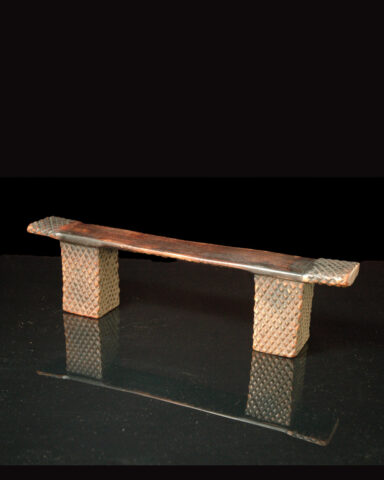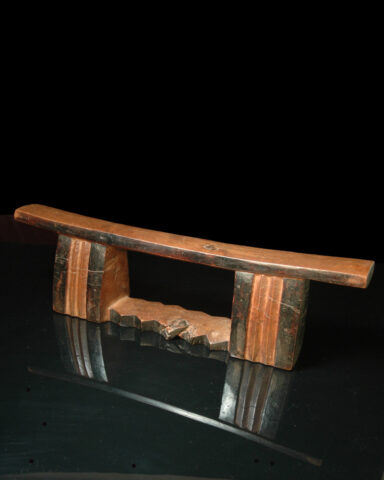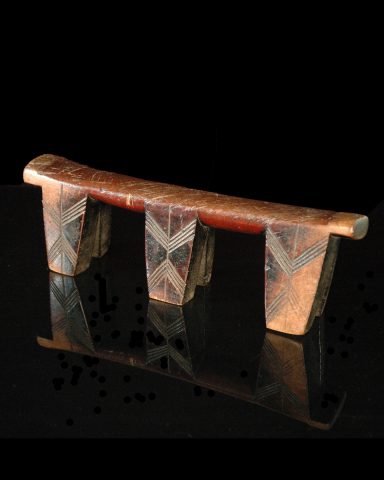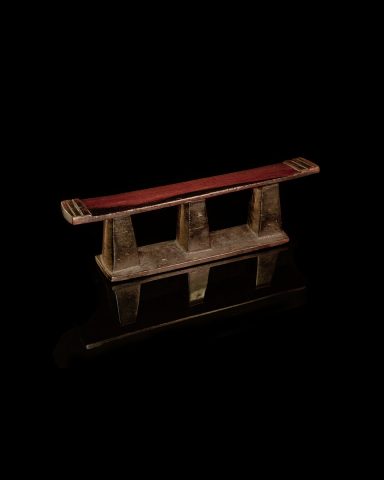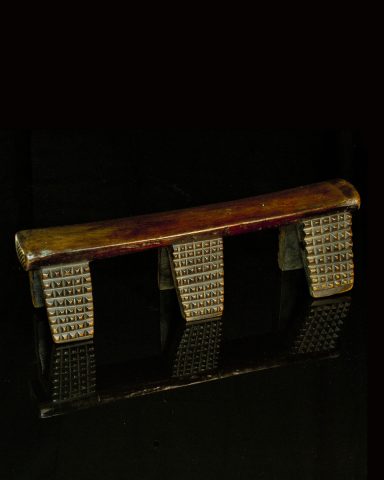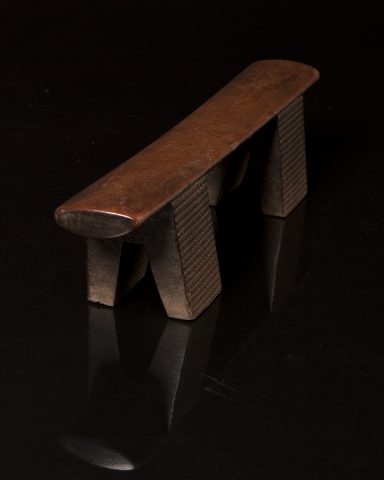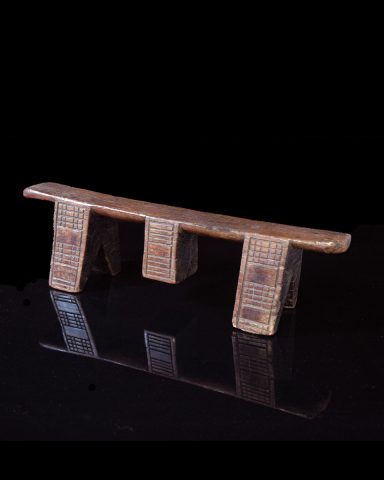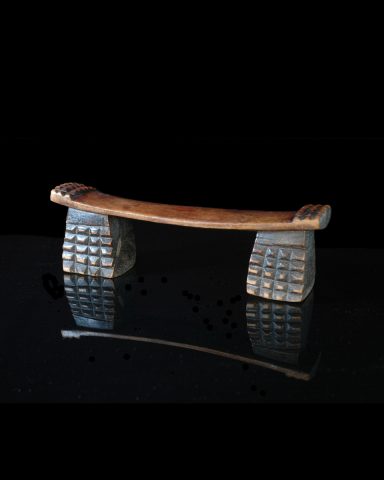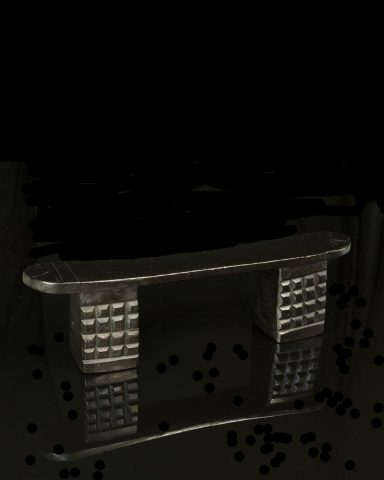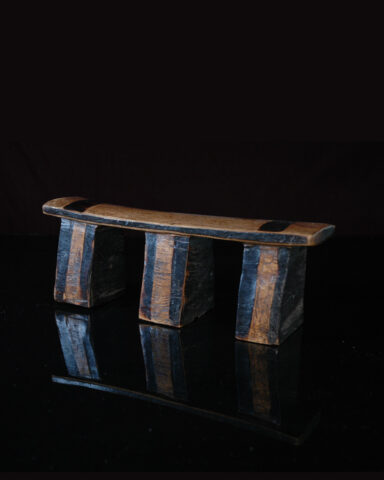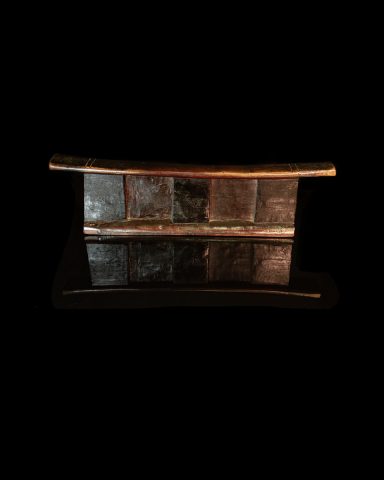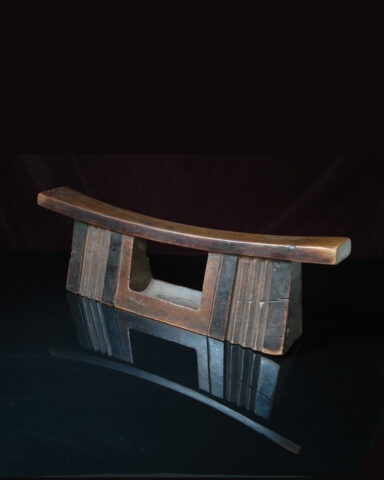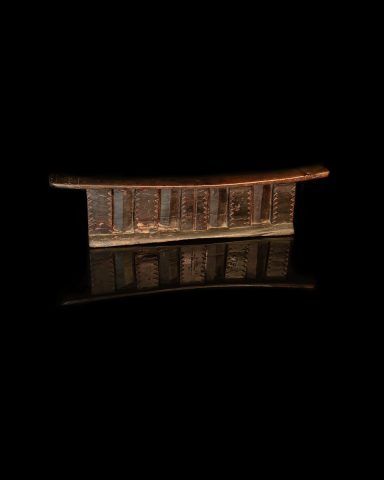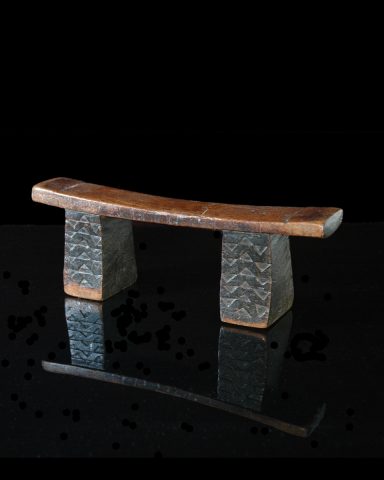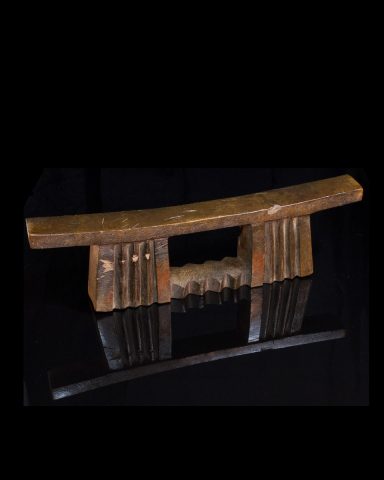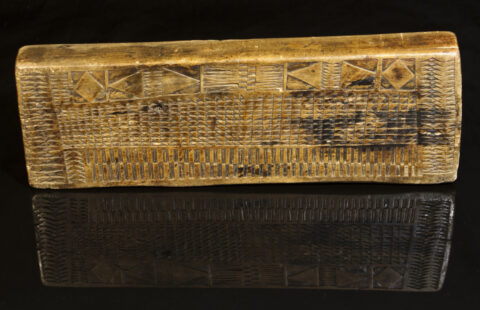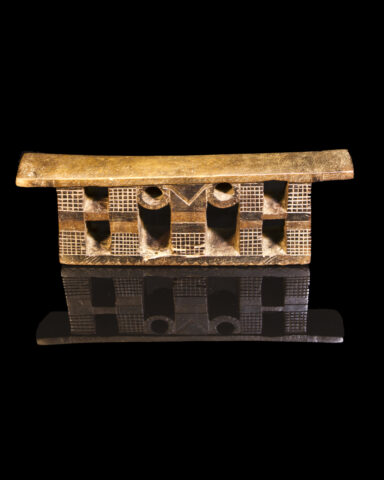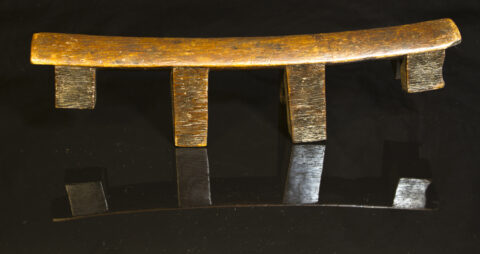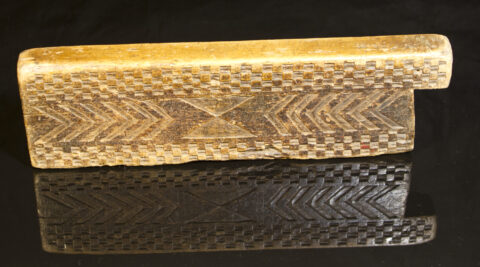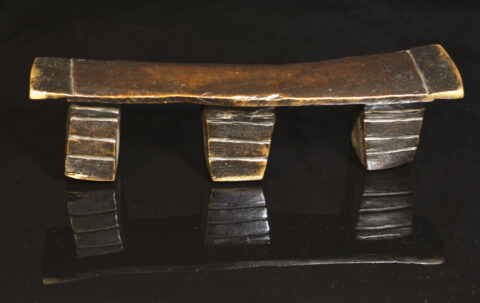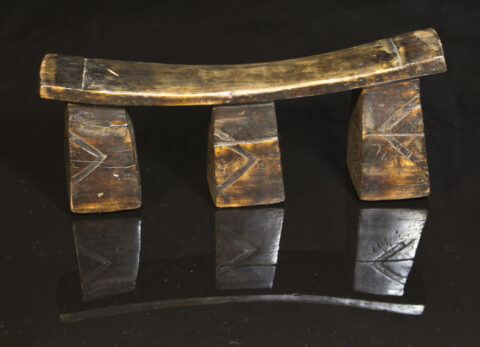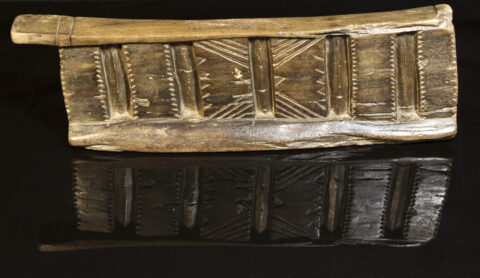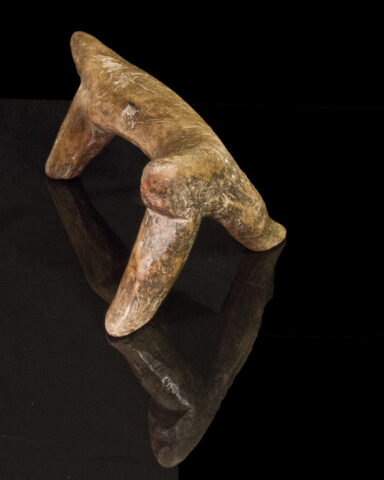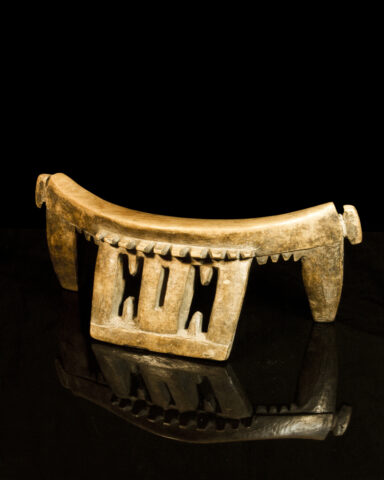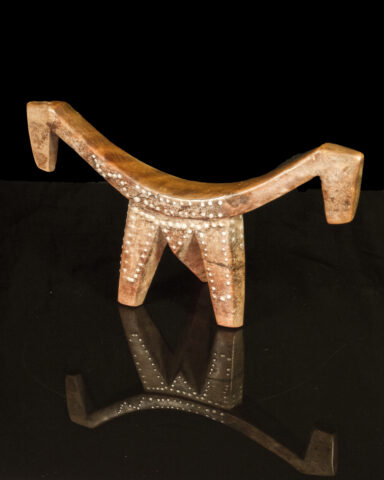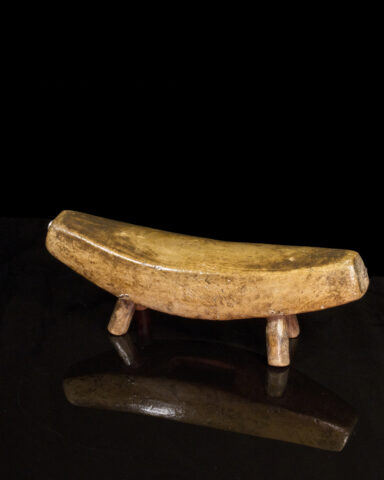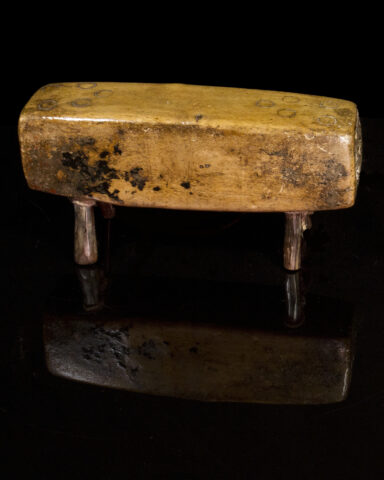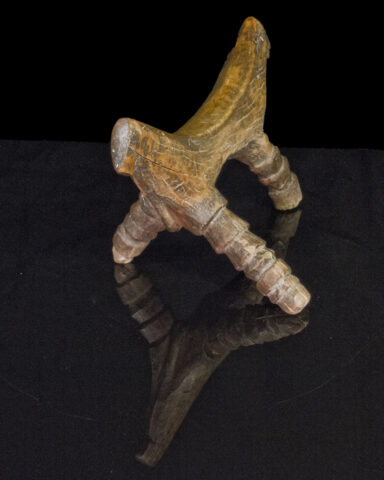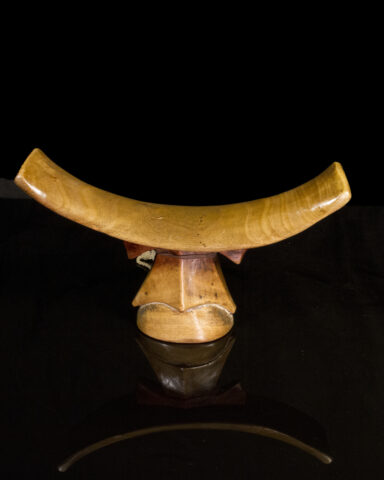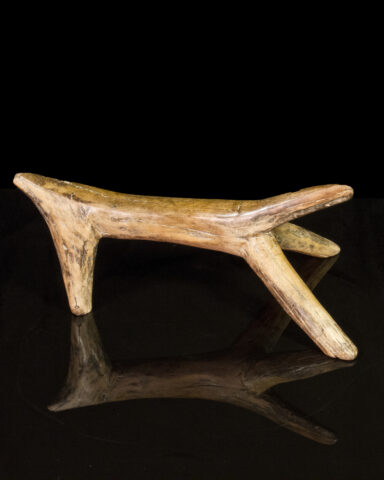Description
The Zulu people are part of the Nguni, an agrarian, homesteading culture living in Southern Africa. These headrests are hand sculpted from a single, hardwood block, and are either flat or beveled on top. They feature two, or three legs or “links.”(as in this object). The links are marked by many “amasumpa” (raised bumps), each of which representing heads of cattle owned by its user – a powerful measure of wealth in Zulu culture. By social custom, this headrest is frequently offered to the bridegroom from the bride as a vehicle for communication with their Zulu ancestors. It is also believed to be symbolic of procreation with cattle and human descendants in agrarian societies. Imbued with the masculine quality of “ubunkunzi” (i.e., “like a bull”/“bullness”), the Zulu headrest signifies a virility indispensable to the survival of one’s family and the extended ethnic group.
REFERENCES:
Bishop, S.D. 1986. African Headrests. Scholar.ufs.ac.za.
Johannesburg Art Gallery. 1991. Art and Ambiguity: Perspectives on the
Brenthurst Collection of Southern African Art. Johannesburg: Johannesburg Art Gallery.
Nettleton, Anitra. 2007. African Dream Machines: Style, Identity and Meaning of African Headrests. Johannesburg: Wits University Press.


